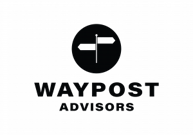The Costs That Live In The Shadows: Indirect Spend
Let's talk about indirect spend. At Waypost Advisors, indirect spend is something that's near and dear to our hearts because we know the problems it can cause and the opportunities it can bring. Indirect spend is one of those underrated aspects of business management that tends to fly under the radar. Even so, while often overlooked, it can make up a hefty amount of a company's total spend, typically ranging from 35-45%. This often-overlooked area holds untapped potential for significant savings and operational improvements, making it a prime target for optimization. (ProcurementMag.com)
What is Indirect Spend?
Let’s begin by defining the indirect category. Defined as the goods and services required to run a business but are not directly related to the production of finished goods, indirect spend includes such categories as:
- Office supplies
- Lawn maintenance
- Snow removal
- Janitorial services and supplies
- Rent
- Utilities
- Travel expenses
- Maintenance, Repair & Operations
- Facilities maintenance services
- Security services
- Catering services (including office cafes and cafeterias)
- IT Services
- Advertising & Marketing Services
- Other Professional Services – Legal, Accounting, Consulting
If you haven’t recently reviewed your indirect spend for opportunities to optimize, you may have 10-15% cost-savings and efficiency opportunities hidden in the shadows.
Read More: 3 Ways to Prepare for AI to Make Your Supply Chain More Successful
How To Start Assessing Your Indirect Spend
Our team of supply chain consultants at Waypost Advisors always recommend starting with a category analysis, which begins with the data. Tracking down indirect spending data can be a bit of a challenge, but it’s crucial to understand where and how money is being spent on indirect categories. One of the challenges is that, especially in a business with multiple locations, it may be difficult to collate data and ensure an apples-to-apples comparison between the locations, which is essential to leveraging the entire portfolio.
It takes time and a dedicated resource to pull this data together, clean it, and align it in a useful way for analysis. It likely involves a lot of discussion with business participants to tease out tribal knowledge. You may run into scenarios where someone local was leveraged because of a personal relationship (Uncle Bob’s Snow Removal Service) or where only one vendor was sourced because the service was small when it was initiated but has grown over time.
Category Analysis
Once the spending has been identified and data selected, the next step is to define the categories across locations and streamline the data into a story about the spending. A great opportunity is to look at the higher-spend categories and determine the strategy to approach vendors and drive efficiencies. This likely requires more cross-functional discussions with business stakeholders, and these discussions usually require an excellent foundation of detail and executive-level communication to get everyone aligned.
Driving Efficiencies
Two big reasons to optimize indirect spend are saving money and simplifying work. If your indirect spend has never been analyzed, reviewed, or put out to bid, you’ll likely identify numerous areas for savings once you go through that exercise. Additionally, making indirect spend management as painless as possible is also important. There may be opportunities to reduce suppliers (especially across locations), improve payment terms, streamline invoice payment, and collaborate with suppliers so they take on more of the workload (vendor-managed inventory, anyone?).
Related Read: What's the Cost of Delaying Inventory Improvements?
Risks and Pitfalls
Our experienced advisors don’t recommend just a simple RFP (request for proposal) with indirect spend categories. Indirect spend is generally not a widget with a spec. There’s a lot of opportunity to collaborate with suppliers on creative solutions for solving problems. Still, solutions are frequently cross-functional within your company and require excellent change leadership, communication, and influence. Some indirect categories are quite nuanced and even have regulatory and compliance implications that will create risks if short-cutted.
Given the opportunity for indirect spend savings and efficiencies and the nuanced approach to managing them, we recommend a very focused approach when you are ready to embark on this journey.
Still not sure where to begin? Waypost Advisors has leading supply chain consultants ready to help your organization take the next step towards optimizing your organization’s indirect spend. Contact us today and we’ll schedule your 30-minute complimentary call with an Advisor that’s experienced with your situation.
Waypost Advisors is an end-to-end supply chain and resourcing solution. We offer expertise in procurement, inventory, project management, planning, transportation & warehousing to fit the needs of your B2B manufacturing or distribution company. Our advisors can provide you with the resources and expertise to tackle your supply chain challenges while allowing you to still focus on running your business.

